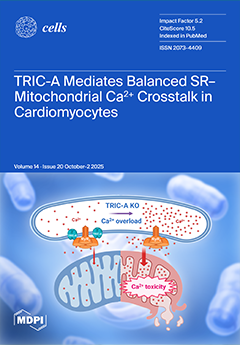In poultry production, the laying rate is a critical economic trait, as high egg production significantly enhances profitability. Mitogen-activated protein kinase-activated protein kinase 3 (
MK3) is a member of the mitogen-activated protein kinase (MAPK) family, which plays an important role in
[...] Read more.
In poultry production, the laying rate is a critical economic trait, as high egg production significantly enhances profitability. Mitogen-activated protein kinase-activated protein kinase 3 (
MK3) is a member of the mitogen-activated protein kinase (MAPK) family, which plays an important role in follicular development. Our previous RNA-seq analysis revealed that
MK3 expression was significantly altered in the ovaries of laying hens exposed to normal versus light-deprivation conditions. Based on previous RNA-seq analysis of chicken ovaries, this study focused on the
MK3 gene to explore its role in regulating apoptosis of follicular granulosa cells in laying hens. The results demonstrated that
MK3 overexpression induced granulosa cell apoptosis by modulating the expression of key proliferation- and apoptosis-related genes, including
FAS,
Caspase3,
BCL2, and
C-myc. These findings were further validated using specific siRNA-mediated knockdown of
MK3. Flow cytometry, CCK-8, and EdU assays consistently showed that
MK3 facilitated apoptosis and inhibited granulosa cell proliferation. Additionally, dual-luciferase reporter assays revealed that the transcription factor
WT1 bound to the
MK3 promoter and enhanced its transcriptional activity. Mechanistically,
MK3 regulated granulosa cell apoptosis through the TNF/P38 MAPK pathway. This conclusion was corroborated by treatment with the P38 inhibitor GS-444217 and specific siRNA targeting components of the pathway. In summary,
MK3 promotes granulosa cell apoptosis in the follicles of laying hens, is transcriptionally regulated by
WT1, and exerts its pro-apoptotic effects via the TNF/P38 MAPK pathway.
Full article






